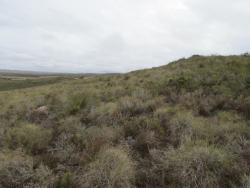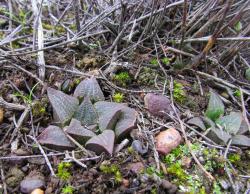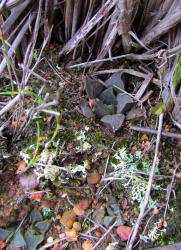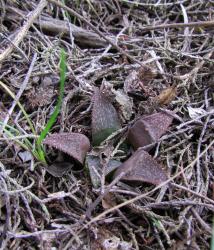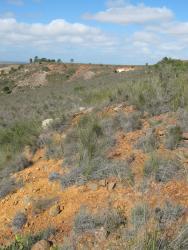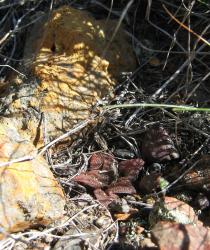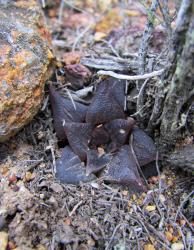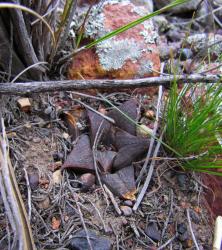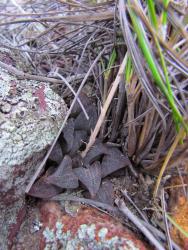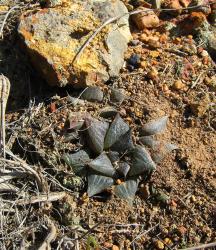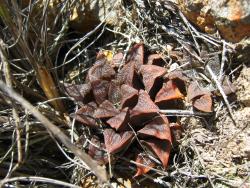The name Haworthia magnifica is kept for the sake of convenience to separate it from the similar Haworthia mirabilis that is found further to the west. In general Haworthia mirabilis has more lanceolate-like leaves than the former making the distinction fairly easy in a number of cases and in others less so. M. Bruce Bayer places H. magnifica under H. mirabilis and this may have some scientific merit. Science and taxonomy are however strange bed fellows and much open to the interpretation of the individual taxonomist.
In general Haworthia mirabilis has more lanceolate leaves than Haworthia magnifica and the distribution of the latter is largely east of the Overberg region and Haworthia mirabilis more so to the west.
Haworthia magnifica - Type locality - Werner Frehse Reserve
the following summary and pictures by Gerhard Marx.
Habitat at Werner Frehse Reserve.
Haworthia magnifica Poeln. was described from 'the meadow of Riversdale' and the original collection was done by Mrs Ferguson in 1933. This meadow-like habitat to the south-east of Riversdale now falls inside the Werner Frehse Nature Reserve and plants matching the original description of H. magnifica are still growing well hidden beneath the grass tufts of this area.
The plants are quiet variable and they range from toothless H. splendens-like smooth and glossy-leaved to plants with distinct teeth along the leaf margins and sometimes even a few hairy tubercles on top of the leaves.
In the original description these plants were compared to H. asperula and H. pygmaea. The so-called H. asperula grows only three kilometres to the north, so it is very closely related and some clustering plants here may look identical to H. asperlula.
These plants share the frequent fine white flecks inside the windows with H. pygmaea var argenteo-maculosa, but otherwise the strict summer-flowering habit of H. magnifica is a clear indication that they are not closely linked.
The main key features of H. magnifica are the ‘pimpled’ upper leaf-surfaces, smooth leaf-sides, subtle to prominent white flecking inside the leaf windows and summer flowering habit.
A limited number of seed grown plants are available on Plant Auction from time to time.
Haworthia magnifica - Soetmelksrivier
The following from Gerhard Marx.
Habitat Soetmelksrivier.
This form of Haworthia magnifica is one of the most attractive because it shares the compact rosette shape with recurved leaves and ‘pimpled’ upper leaf-surfaces with H. splendens. At the same time its dark-brown to black-green leaf colours also show strong links to H. enigma. The Soetmelksrivier habitat is interestingly situated more or less in-between those of Haworthia splendens to the east and Haworthia enigma to the west.
The plants occupy the north, north-east and north-west facing slopes of low hills consisting of kaolin-like clay and ferricrete conglomerate.
The Soetmelksrivier H.magnifica flowers in mid-summer which is a key character of the Haworthia magnifica and Haworthia mirabilis groups. For numerous practical purposes and more balanced nomenclatural arrangement, it works best to keep the H. magnifica group separate from H. mirabilis based upon various leaf characters and distribution of magnifica largely east of the Overberg region. H. magnifica is therefore characterized by having smooth leaf-sides and subtle to prominent rounded pimples on the upper leaf surface. The typical variety of H. magnifica also features few to numerous silvery-white flecks inside the leaf windows and this feature is found in most populations although generally less prominent in the case of the Soetmelksrivier plants.
Seed grown plants are limited and will be available on Plant Auction from time to time.
